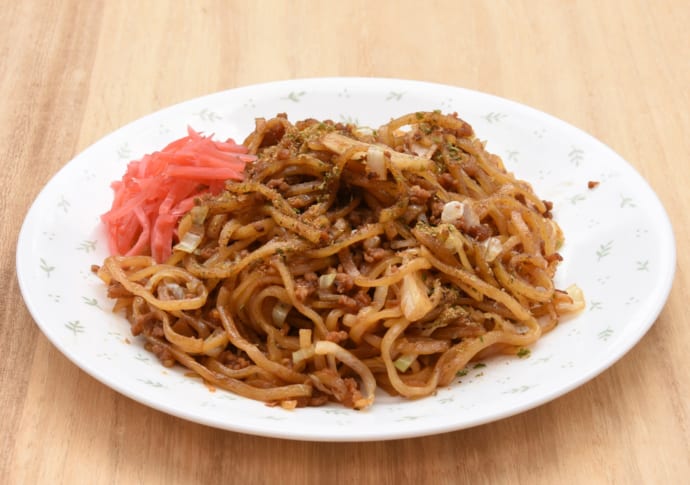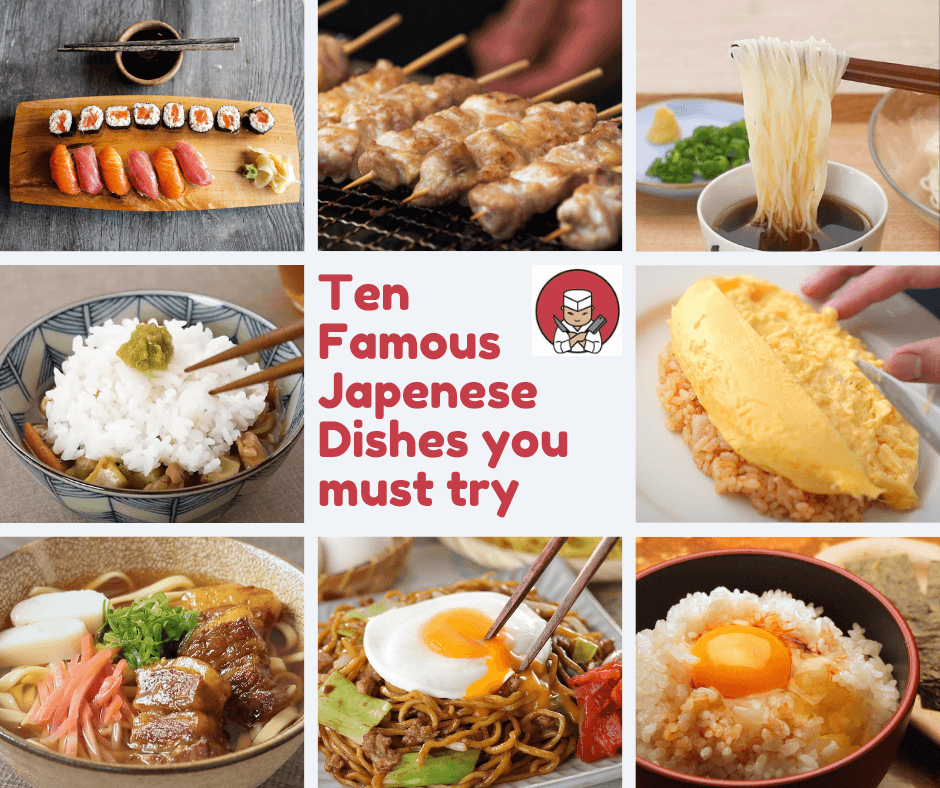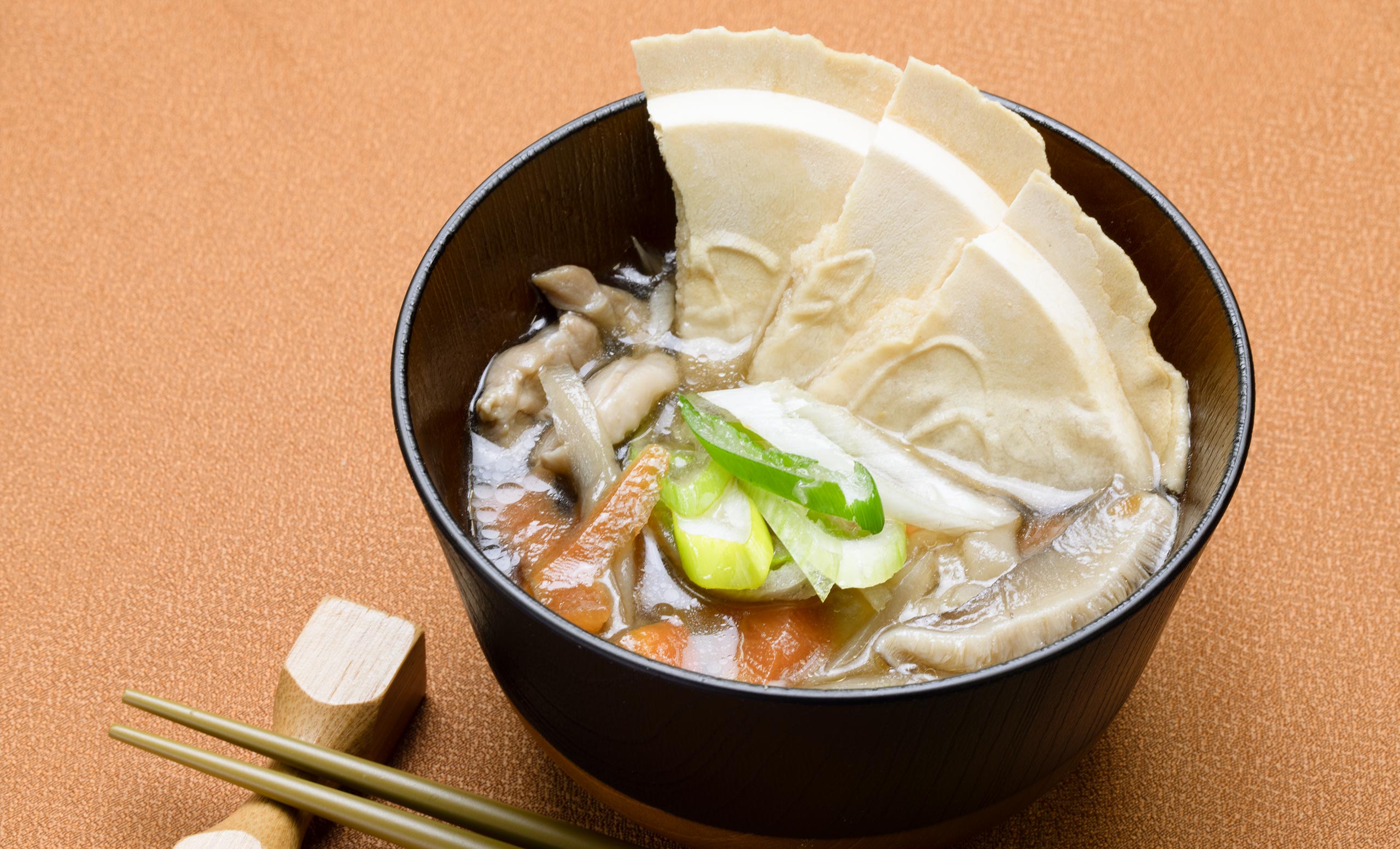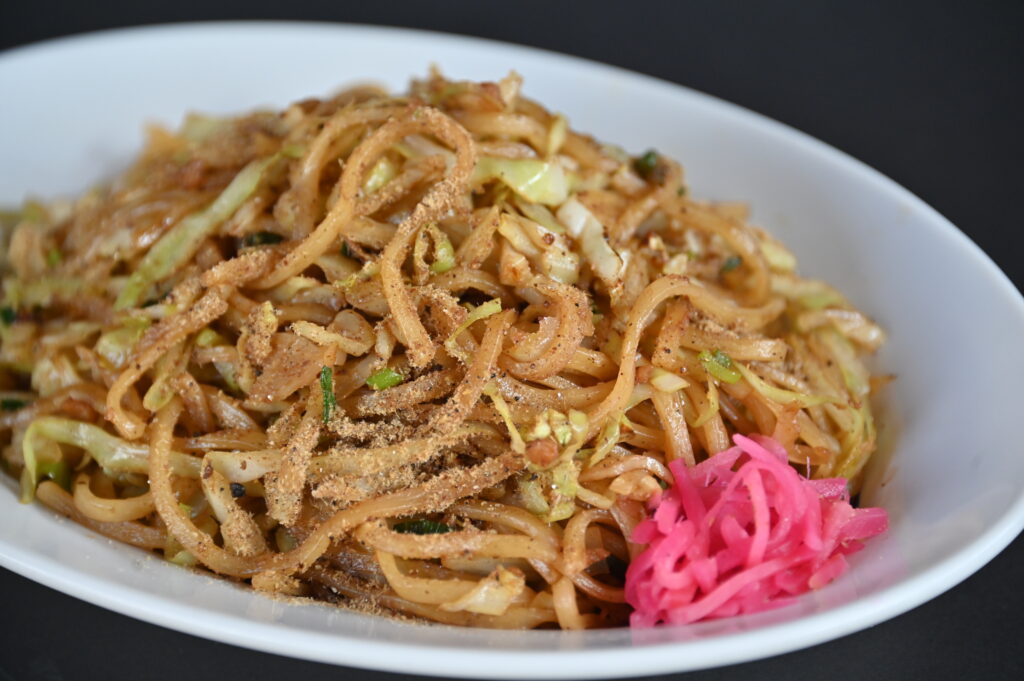
Fujinomiya Yakisoba (富士宮やきそば) is a unique, local variation of yakisoba (i.e stir fried noodles) from Fujinomiya City in Shizuoka Prefecture (Chubu Region).
It is one of Japan’s “Big Three” local yakisoba types — along with Ota Yakisoba and Yokote Yakisoba.
The main characteristics of Fujinomiya Yakisoba are its locally made chewy noodles, and use of “meat scraps” or “meat crisps” — known as “niku-kasu” (肉かす) in Japanese — to get its unique flavor.
Niku kasu is simply the crispy bits of meat and fat that are leftover on the grill/pan after the oil has all been removed / cooked out.
Not very healthy, but super delicious! It is also a great way to reduce waste and make use of leftover parts of meat.
Read on for more interesting info about Fujinomiya Yakisoba!
Ingredients
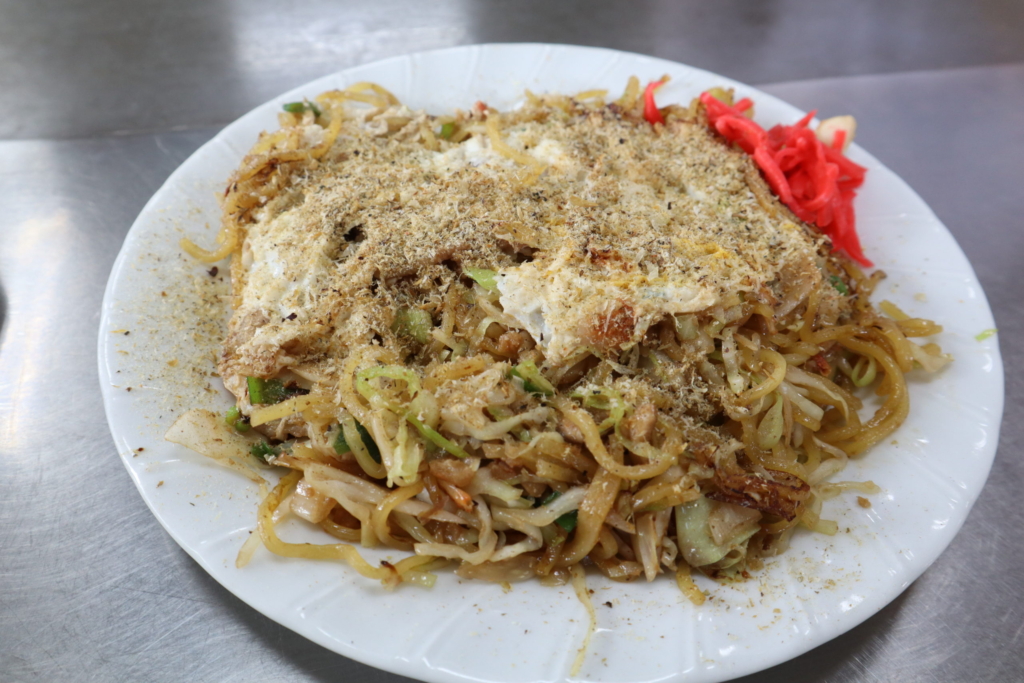
The main ingredients of Yokote Yakisoba are:
- Ramen Noodles
- Cabbage
- Niku kasu (meat scraps)
- Dashi Powder
The noodles used to make authentic Fujinomiya Yakisoba must come from an official local noodle maker. There are currently four official companies that produce Fujinomiya yakisoba noodles (Kanouya, Marumo, Soga, Sanomen).
Fujinomiya noodles are much chewier than “regular” yakisoba noodles. This is a result of the unique manufacturing process where the noodles are steamed, then quickly cooled and coated with oil. Other yakisoba noodles are typically steamed AND boiled during manufacturing, which results in a much softer texture.
Niku-kasu (i.e. meat scraps) is another unique ingredient used to make Fujinomiya Yakisoba. Niku-kasu is basically the crispy bits of meat/fat that are leftover after the oil has been removed or cooked out. Pork is the most common meat used.
The last unique ingredient used is sardine or mackerel shavings (i.e. dashi powder) that is sprinkled on top of everything. This adds a ton of umami to the dish.
The sauce used differs by restaurant; most places have their own special blend. It typically involves some combination of Worcestershire sauce and other ingredients.
Benishoga (i.e. pickled ginger) is usually served together as a side/garnish.
Location / Where to Eat
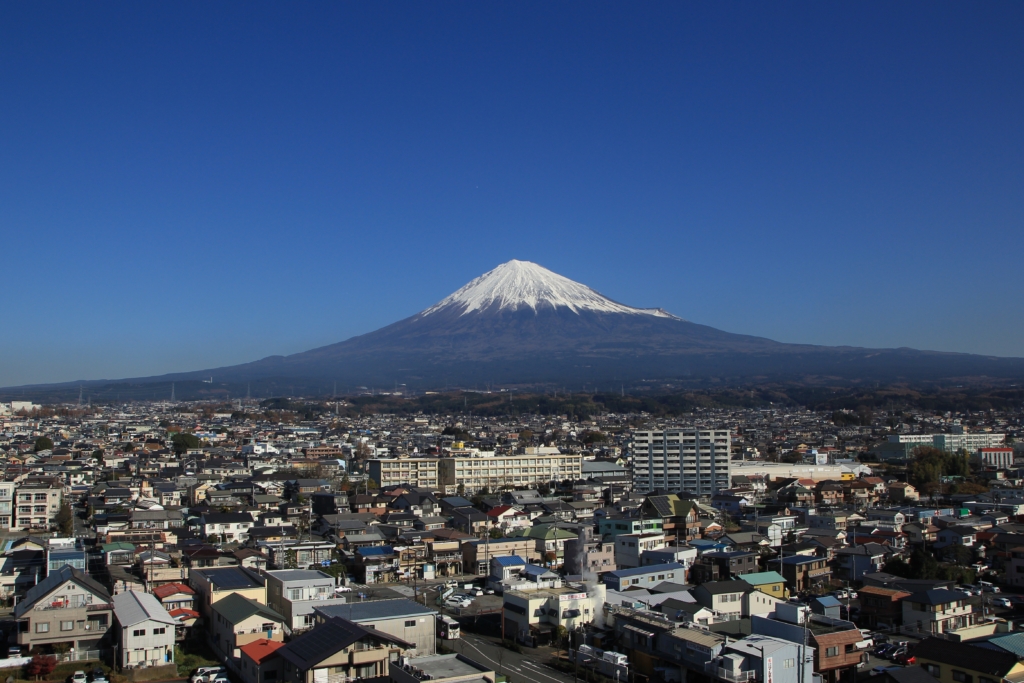
Fujinomiya Yakisoba is only found in Fujinomiya City, a small town in Shizuoka Prefecture of about 130,000 people that has great views of Mt. Fuji.
There are over 70 official restaurants that serve Fujinomiya Yakisoba, according to the official Fujinomiya Yakisoba Association website. There is also an official map, if you’re interested.
Each restaurant that uses the name “Fujinomiya Yakisoba” must be certified by the association.
The top three Fujinomiya yakisoba restaurants according to tabelog are: Uruoitei (うるおいてい 本店), Yuguchi (ゆぐち), Okonomi Shokudo Ito (お好み食堂 伊東)
Here is some more info on each one:
Uruoitei – Main Store (うるおいてい 本店)
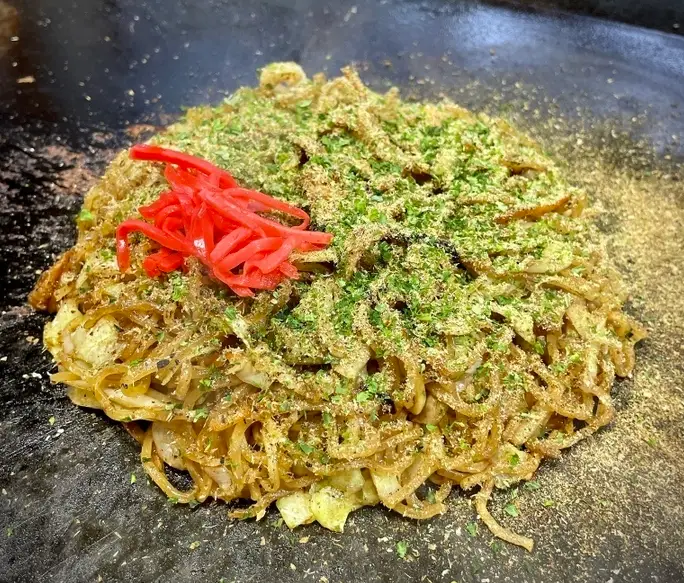
Uruoitei is the most popular Fujinomiya yakisoba restaurant according to tabelog.
It has a few variations of yakisoba dishes that range in price from 630 yen to 980 yen depending on toppings and size.
It is also has okonimayaki, and other teppanyaki based dishes.
Visit Uroitei: Official site / Google Maps link
Yuguchi (ゆぐち)
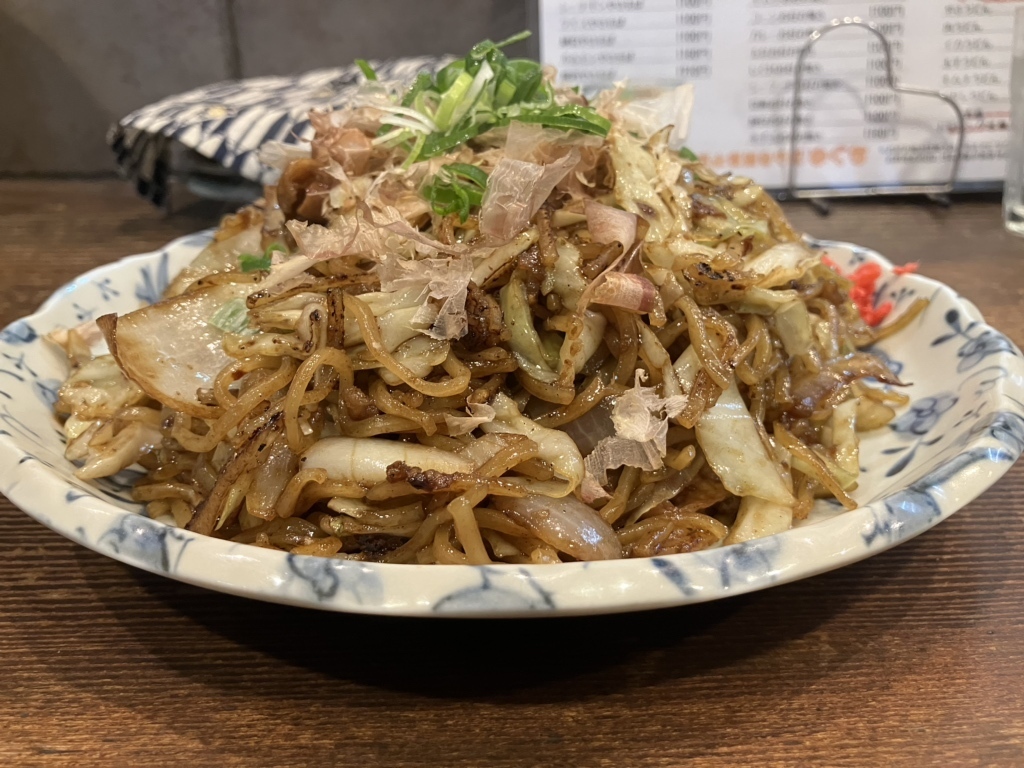
Yuguchi’s yakisoba ranges in price from ¥720 to ¥1210 depending on type/toppings. There are a ton of types to choose from including squid, chicken, hormone (i.e. offal), yakiniku, and more.
Other menu items include yaki-udon, and okonomiyaki.
Visit Yuguchi: Website / Google Maps
Okonomi Shokudo Ito (お好み食堂 伊東)
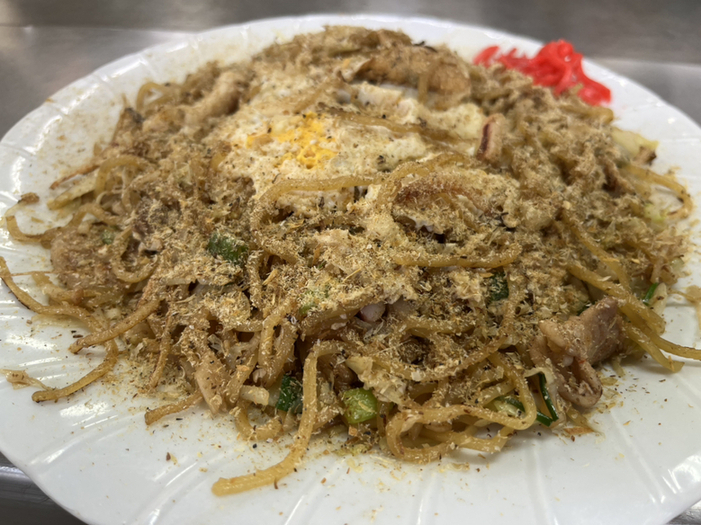
Okonomi Shokudo Ito is a very popular restaurant that has been open since 1975. It is actually the highest rated on Google Maps of the three mentioned shops.
Prices for yakisoba range from ¥550 to ¥850 depending on toppings and size.
They also serve okonomiyaki and yaki-udon.
Visit Okonomi Shokudo Ito here: Google Maps link
History / Origin of Fujinomiya Yakisoba
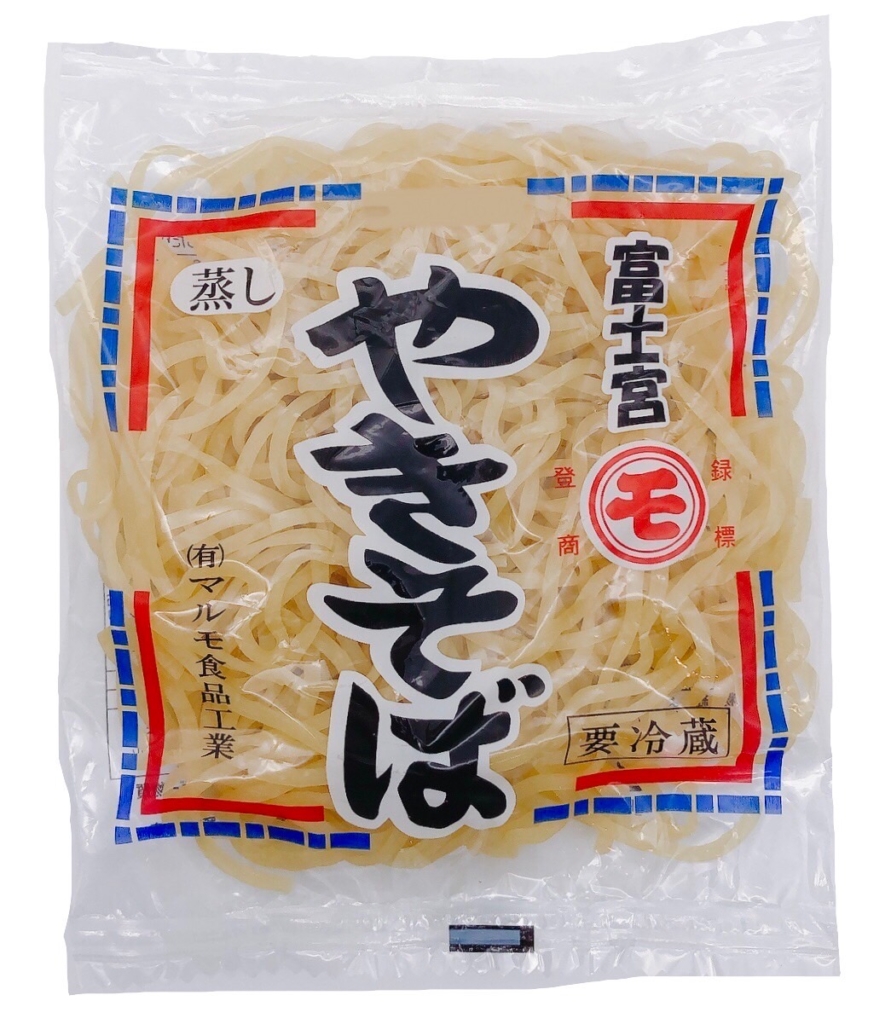
Fujinomiya Yakisoba was invented in the 1950s by Mr. Terutoshi Mochizuki (望月晟敏), founder of Marumo Food.
Apparently, Mochizuki was trying to recreate the taste of Taiwanese rice noodles that he ate during the war (WWII).
He also wanted to create a noodle that could be sold and taken home by the many tourists in the area. Since there was not much refrigeration at the time, he created low-moisture noodles which were made by steaming, then quickly cooling and coating the noodles with oil. By not boiling the noodles (which would add moisture), they were able to stay fresh for longer.
Many okonomiyaki restaurants had opened around that time. They added yakisoba to their menu as another cheap alternative for all the local workers in the area. Niku-kasu (i.e. meat scraps), and sardine shavings were used as they were cheap leftovers from manufacturing of other local products.
Interestingly, yakisoba became so commonly eaten in Fujinomiya that it is usually treated as a side-dish, or snack instead of a main course like in other parts of the country.
In 2000, the Fujinomiya Yakisoba Society was established to use yakisoba as a way to revitalize the local economy. They trademarked the term “Fujinomiya Yakisoba” to help market the product. It has been quite successful, as Fujinomiya Yakisoba is now considered one of Japan’s “Big Three” yakisoba types (along with Ota Yakisoba and Yokote Yakisoba).
How to make Fujinomiya Yakisoba
To make “authentic” Fujinomiya Yakisoba, you will need to get the local ingredients from Fujinomiya. It will be quite difficult to find many of these ingredients outside of Japan.
Most important is the locally made noodles, which are only available from four companies (all based in Fujinomiya, Shizuoka). You will also need niku-kasu (i.e. meat scraps), which is not a very common ingredient.
If you are in Japan, you can order these online from local companies like Marumo or Kanouya.
If you do manage to get all the ingredients, here is a simple recipe adapted from tabepro and cookien:
Fujinomiya Yakisoba Recipe (富士宮やきそば)
Course: MainCuisine: JapaneseDifficulty: Easy1
servings10
minutes10
minutes20
minutesMake some authentic Fujinomiya yakisoba.
Ingredients
Fujinomiya Yakisoba noodles … 1 ball / serving
Niku-kasa (Meat scraps) … 10g
Cabbage … 120g
Hot water … 40ml
Yakisoba sauce … 20ml
Dashi powder / sardine shavings … appropriate amount
Benishoga (pickled ginger) … appropriate amount
Directions
- Cut the meat scraps into half centimeter pieces, and cut the cabbage into small strips or bite sized pieces
- Heat a frying pan on medium heat, and add the meat scraps. Stir fry until it releases oil.
- Add cabbage to the pan and stir fry until everything is coated evenly.
- Push cabbage to one side, and add noodles to the pan. Put a bit of hot water on top of the noodles to help loosen them.
- Spread everything out evenly on the pan and cover with a lid to steam for about 3 minutes.
- Remove the lid. Turn up the heat to high, add the sauce, and stir fry everything well together until it is coated evenly in sauce.
- Turn off the heat, sprinkle on some dashi powder. Add the benishoga to the side, and you’re done.
- Enjoy!
Notes
- Add any other meat or vegetables as you like (e.g. bean sprouts, onions, seafood)
- You do not need to add oil, as there should be enough from the meat scraps.
- Use hot water instead of cold water, so that the temperature of the frying pan does not drop.
Fun Facts
- Check out the official Fujinomiya Yakisoba Association
- A song was made about Fujinomiya Yakisoba by a local idol group called Team M2
Summary
Have you ever tried Fujinomiya Yakisoba before? What did you think of it?
Leave your thoughts and comments below!
Subscribe for free today! Receive cool recipes, my latest Japanese knife picks and learn about Japanese culture. Delivered every other week to your inbox.
